Archive for the ‘Children’s Book Reviews’ Category
Poetry
Author: utbt3 May 2010
I reckon that national poetry month just got over. I had been meaning to add my two cents….but better late than never. So here it goes.
Let us play word association. What comes to your mind when you say poetry? This is what comes to my mind:
Glum. Melancholy. Daffodils. Sad. Rote. Wordsworth. Memorize. Exams. Marks. Simile. Metaphor. Hate. Struggle. Depth. Inadequacy. Puzzled. With-reference-to-context. Robert Frost. Complex. Forgetting-and-leaving-a-space-hoping-that-the-word-would-come-to-mind-before-the-exam-bell-rings. Mnemonic.
I know I am not doing justice to the genre of poetry. Especially when early childhood education has nothing but good things to say about poetry and its benefits in language development in young children. I feel that my poetry learning was associated with probing to check for understanding rather than focusing on exposing the beauty of the language and it soured my experience.
I am reading some poetry with my children and at school. From my observations, I feel that poems with a strong cadence are a huge hit with all children. So far I am yet to come across anything that beats Mother Goose in its strong rhythm and cadence. Some of the content in Mother Goose, I feel, is culturally irrelevant, sexist and makes my eyes roll, but I must also say that it is the adult perspective. Children are oblivious to it and are mesmerized. Also from my observations, at around four years children start enjoying nonsense verses. The next in the natural progression is enjoying poems with clever word play. At home we are heavily in to nonsense verses and considering that it the highest level I will ever reach in poetry, we shall remain at that stage for a long time 🙂
I am sharing some poems that we like at home
My Name Is… By Pauline Clarke
Book: The 20-th Century Children’s Poetry Treasury
Selected by Jack Prelutsky. Illustrated by Meilo So
Additional Information: I sing it to the tune of “My name is Madhavi, I am from Allepey” (Karadi Tales)
My name is Sluggery-wuggery
My name is Worms-for-tea
My name is Swallow-the-table-leg
My name is Drink-the-Sea.
My name is I-eat-saucepans
My name is I-like-snails
My name is Grand-piano-George
My name is I-ride-whales.
My name is Jump-the-chimney
My name is Bite-my-knee
My name is Jiggery-pokery
And Riddle-me-ree, and ME.
Eletelephony by Laura E.Richards
Book: The 20-th Century Children’s Poetry Treasury
Selected by Jack Prelutsky. Illustrated by Meilo So
Additional Information: It so happened that Chula and Mieja’s teacher also read this poem at school. Need I say how thrilled they were?!
Once there was an elephant,
Who tried to use a telephant-
No! no! I mean an elephone
Who tried to use the telephone-
(Dear me! I am not certain quite
That even now I’ve got it right.)
Howe’er it was, he got his trunk
Entangled in the telephunk;
The more he tried to get it free,
The louder buzzed the telephee-
(I fear I’d better drop the song
Of elephop and telephong!)
From school: The primary teachers do a cool circle time game in which they sing, “Willaby Wallaby BAY, an elephant sat on JAY. Willaby wallaby BACK, an elephant sat on JACK”. The idea is to rhyme a nonsense word with a child’s name. Once the kids are familiar with this routine, they sing, “Willaby wallaby MALICE, an elephant sat on______”, they pause and the children chorus “ALICE” – they pick a child’s name that rhymes with ‘malice”. If the children are rained in, they are sure to play this game, it keeps them engaged for a long time.
Book: Gasa Gasa Para Para Author: Jeeva Ragunath. Illustrator: Ashok Rajagopalan
Book: A-vil yirundhu Ak varai Author: Jeeva Ragunath. Illustrator: Nancy Raj
Publisher: Tulika
Alliterations, onomatopoeia, funny alphabet pictures, nonsense verses. What is not to like in these books?!
A-vil yirudnhu is about the vowels.
Gasa Gasa Para Para focuses on the consonants and the letters emerging when combined with the vowels. My children like to look at the books and identify the tamil alphabets.
Musings From The Couch
Author: utbt26 Apr 2010
The intermittent rains means only one thing in our household and that is Mieja falling sick. Usually the duration in which she is sick is timed between a Friday afternoon to Sunday afternoon. The whole weekend I would carry her around like a joey and by Monday she would return to school healthy and me exhausted. This time she fell sick on a Monday afternoon. So I was happy for the small blessing.
Overall it was a pretty smooth sickness, we wrapped it off in two days with just one throw up and we vegetated on the couch and read plenty of books. When her temperature spiked she would have her medicine and pass off and I would catch up on my homework and reading work.
Beginning of every semester is time of glee for me. I thoroughly enjoy the process of signing up for the classes I need to do, bidding for used text books on Ebay and such. There is such a kick in getting a three digit dollar price text book for one sixth the price! Now that I am done with all my advanced level courses, I have a few general education courses that need to be done. I was said that I have to have at least one unit in PE(Physical Education). I tried my best to get PE waived in lieu of my stint as a yoga teacher. I am certified and I taught yoga for a good one year. But it did not fly. So I signed up for a Stretch and Flex televised course. Yep, ‘technology has improved sooo much-a?!’ that now I can do a PE course without being on campus. BTW, from my view from the couch, they can stretch a little bit more and flex a bit more 🙂
Some of the books that earned Mieja’s approval(A.K.A read a 100 million times) are below.
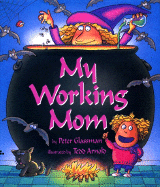 |
My Working Mom by Peter Glassman, illustrated by Tedd Arnold. Now, this book, me likey mucho and I think it deserves a spot on Saffron Tree. So hop over to ST to read the full review. |
Beasts Of India
Author: utbt17 Feb 2010
Edited to add: Submitted post for Shruti’s Artsy-Craftsy June 2001 Folk art challenge.
To play Feb’s “Guess the book” see the side bar.
FOLK ART.
The very first time I heard this term was in 2003. I was experimenting with various mediums. I took my Tanjore painting of Krishna and Balram to my oil painting class, people were impressed by the richness and details. That’s when some one popped the question, “Is this folk art? Some thing typical of India?”. Though I had no clue about the exact definition of folk art, some thing prevented me from saying yes. I thought hard and answered, “Well, it is more like traditional art, practiced in the southern part India.” Though I had answered the question, I had no idea about the difference between folk art and traditional art and why I chose the later term to describe my painting. But something was planted in my mind regarding the different art forms of Indian art. Ever since, people who have know me would have heard me say, “I am looking for books on Indian art that are intrinsically India.”
For the past couple of months I have been looking at Tara’s website, which by the way is my new pass time, and I must say that I am mesmerized. All their books have a unique theme and the vibrant book covers tempted me to hit the ‘Add To Cart’ button. It was at this point I happened to clean one of book storage bins and I almost squealed in delight. There, it was lying at the bottom of the bin was Tara’s BEASTS OF INDIA! I must have bought it in my recent India trip and must have completely forgotten about it or the book fairy must have paid me a visit. (In case if it is the book fairy, I don’t mean to sound ungrateful, thanks for this book and all that, but you really must look at the complete list. I so want to own DO! Also by Tara.)
The book has been reviewed for Saffron Tree. Find the review here.
How can we let this inspiration pass. So we combined it with the festive atmosphere of the Lunar New Year and Satish’s review of Everyone Knows What A Dragon Looks Like and we made our own paper dragons.
First what we talked about how every one imagined their dragons. Prominent features like big eyes, horns, bushy eye brows, sharp teeth, fire were thrown out. We all unanimously agreed that the dragon is scary and the color red must feature in the dragon.
We picked one style that inspired us to create our dragon. Chula wanted to combine Patachitra and Gond. The little one started with Madhubani and soon changed her mind. I was deeply attracted to Gond the minute I set my eyes on one. So I stayed with Gond till the end.
The hand with its fingers spread out can be a starter for many art forms. For the most part it eliminates the, “I can’t do it like you amma, can you do it for me?”. We traced our hands, leaving out the the thumb. We converted the index finger and the pinkie in to ears. The other two fingers became the horns.
It took me a good two hours to finish my dragon and I must say that it was deeply therapeutic. The little ones lost interest after the first fifteen minutes and they moved away. But they saw how much I was enjoying myself and came back to ‘help’. For the last 45 minutes they sat next to me, one holding the pens and one making sure that I did not miss the pattern. The critique from the little ones, “Well, he kind of looks friendly amma. Not scary at all. May be he is a she.” I did start out with the mental picture of the Yali, but the end result was very different.
I know that the books touched the girls because when I stepped out I saw that they had created out of side walk chalk a Warli inspired cow 🙂
With that I leave you with some pictures.
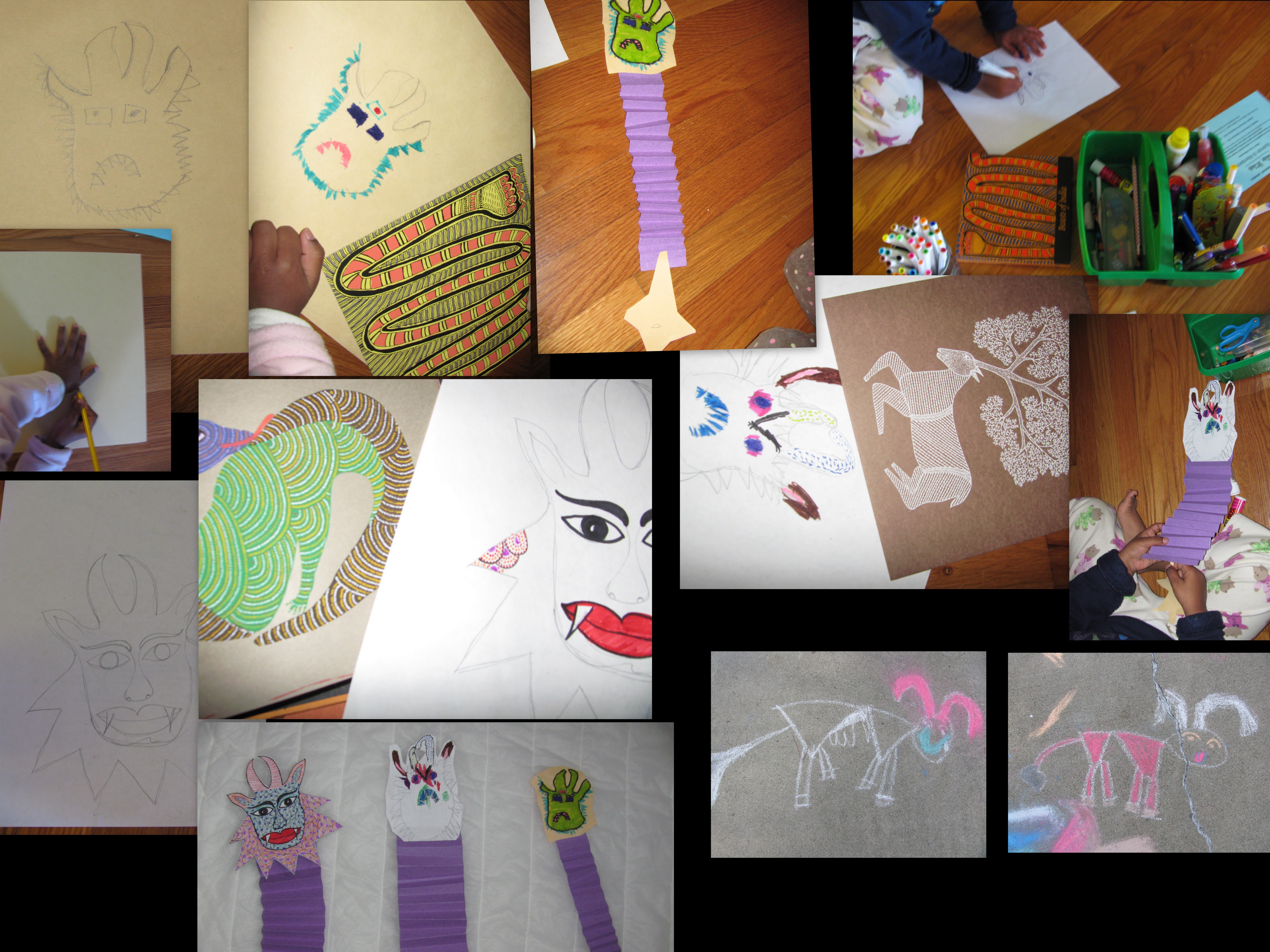
Dragon inspired by Beasts of India
Quicksand Pony and GUESS WHAT BOOK game
Author: utbt9 Jan 2010
Balaji of Bbthots writes a guest post for Saffron Tree. Check out his review of Quicksand Pony.
Guess what book we are currently reading at home? Clue is the picture below. You guys have time till Tuesday, Jan/12/2010.
Edited to add: Alice’s adventures in wonderland, A pop-up adaptation of Lewis Carroll’s original tale by Robert Sabuda.
Suki, San bingo. The two of you get three hi-hip-hurrays each.
SV, Kowsalya, thats why I strategically put three tea cups in the pics. 😉
Chox, I had my be riding on you. What with me asking you about simple Alice in wonderland for kindergartners. In fact I wanted to add in the post “Chox is not allowed to comment”. Tiger who came to tea-eh? Recommended by you, five starts from amazon, will check it out from the library.
DDMom, that is a good suggestion, will ask them to email me instead of commenting. Reg the plug-in pls chk the comments for this post.
Boo, Goldilocks? Was this purposeful misdirection? Oh master riddle cracking ex-MTB, puzzle breaking machine, cross word superstar, did you say Goldilocks on purpose?
Martha Doesn’t Say Sorry
Author: utbt11 Dec 2009

Technorati Tags: preschooler saying sorry, spunky girls, girl power, breaking good girl stereotypes
Featuring On Our Bookshelf
Author: utbt24 Oct 2009
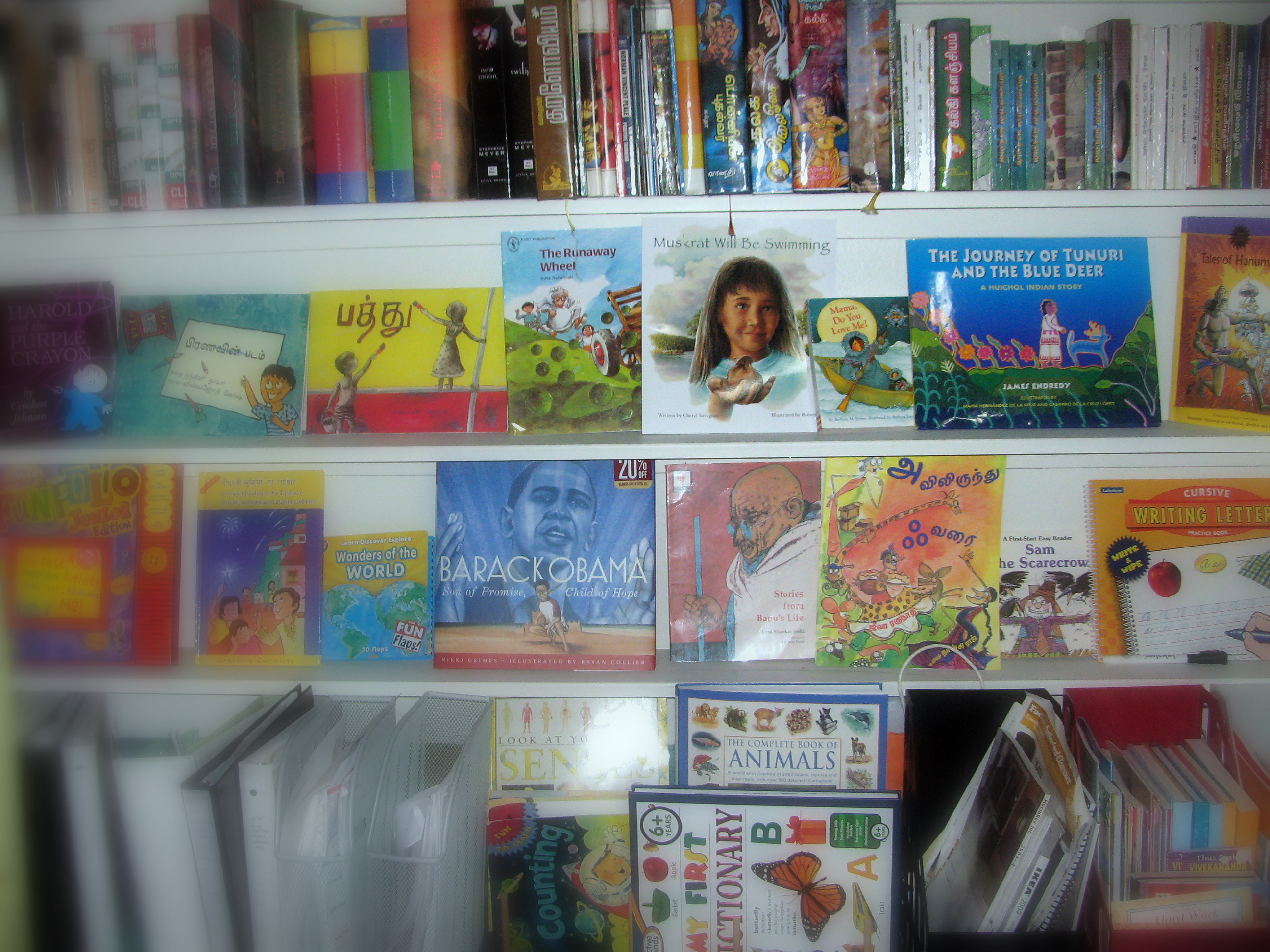
Featuring in our library are my picks for CROCUS2009 @ Saffron Tree.
The Journey Of Tunuri And The Blue Deer
This is the favorite corner of my home.
Our bookshelf.
I love it. From the curtains, to the rug, to the file holders, each thing was hand picked by me with my precious books in mind.
The previous owners had converted a bedroom in to a media room. So instead of a traditional closet we have shelves. This is the space that houses the books we have. The bottom most shelf for my school stuff and large books. The next two shelves from the bottom are for the kids books, arranged so that the whole front cover of the book is showing. These books are rotated every two weeks. Books that are piled with their spine showing, on the side shelves are placed in the central area so that the front cover shows. I rearrange the books with a theme in mind. After this I casually let the kids in to the room. They notice that there are new books and their comment is , “AMMA YOU PUT OUT NEW BOOKS!!!!” Most of the books we have had for the past two years, but by showing them only 10 books at a time, they have renewed interest. If a book that has been put out has not been touched in spite of it being ‘new’, they are retired to a storage box in the garage.
The rest of the books that belong to the adults in the house arranged in a certain order. As the shelf height increases the appropriateness(for Chula and Mieja) of the books differ. First comes Harry Potter series, LOTR, English and Tamil version of Ponniyin Selvan, Roald Dahl, R.K.Narayan etc. Above them are Catch22, Fountainhead, Alexander Maccall Smith, few Grishams, Robin Cooks, Douglas Adams etc. As the height increases the adult content of the books increase. The idea is Chula and Mieja will be a certain age, hmmmm 30 may be, by the time they are reading books with sexual content. So they better not climb on chairs or tip toe to get those books.
On the very top shelf are my ORACLE, C++, Operation System, JAVA books from my former jenmam. These are way high, not to keep them away from the kids, but to be out of my sight, so that I can be free of nightmares.
Oh, I forgot to mention, the books are grouped and sub grouped by categories like by author, height, chronology, theme etc. For example, all Tulika books are in one basket, starting with Tamil books arranged in height order(unless there are two books with similar theme, then the height order is sacrificed), then the bilingual books in height order, then the English books in height etc. The book HAS to go back in to the very specific spot that it came from, otherwise God forbid, a reorganization is in order. It takes me a weekend to reorganize the bookshelf because, I first draw a rough sketch, a flow chart, catalog, sit in a corner and read a book and then arrange them.
IF (in capital because most people who know me have stopped borrowing books from me) some one borrows a book from me, I almost make them sign a binding contract that lets me cut their right ear off if they accidentally took my book to the bathroom(yuck) or folded a corner or folded it open along the spine or spill something on it or crumple any page or…..okay the list goes on.
* ! I love my book shelf ! *
Okay folks, now march on to Saffrontree, read our reviews and leave comments. Only if we hear you, we will know what you are thinking.
Technorati Tags: books shelf, how to arrange books to keep kids interested
One
Author: utbt16 Aug 2009

Photo courtesy http://theabfc.wordpress.com/
Author/Illustrator: Kathryn Otoshi
Recommended Age group: 2 and up.
When I pick a book from the library, I pick up the book for its social/ethical values or for its pictures or for the educational values. Books like Flotsam inspires me to think out of the box. Books like The Relatives Came talks about the same issues we go through at home from time to time. In a nutshell, when I thumb through a book, I inadvertently shelve it in to a category in my mind. It forms the angle I adapt when I read the book at home with Chula and Mieja. Once in a while a book like One comes along and it just blows my mind.
Well, it talks about numbers and colors. So is it a toddler book to introduce colors and numbers? No. One is definitely more than that.
It has simple sentences and is easy to read. When they talk about the color red the author writes Red, making it easy for a preschooler to connect color to the name of the color in print. So is it an easy reader book? May be and some more.
When the author says, “Red got bigger and bigger and bigger”, she illustrates it with three red dots in increasing sizes. Is it a book that helps children comprehend comparison? This is got to be a early math skills book. Yes, definitely…..and much more.
It talks about feelings. So is it a book on values. Yes, that too.
One is the story of seven colors. Blue, Yellow, Purple, Orange, Red, Green and the number One. Blue is an average Joe. He has his days, taking pleasure in simple things, at timesfeeling insecure hoping that he could be like some one else. He is weird with in acceptable limits. Then comes Red. He senses Blue’s insecurity and teases him. No one stops Red. Blue feels blue. Red’s ego bloats. Now comes One as in number one. So far the colors are illustrated as a blob of watercolor. One is gray, he has sharp corners and angles and nothing like the other colors have every seen. One is unique not only in appearance but also in his nature. He stands up to Red and refuses to be bullied. He looks at other colors and says, “If someone is mean and picks on me, I for One stand up and Say No.” Other colors join One in his stand against Red, even the meek Blue. Now Red turns even redder from the embarrassment and rolls away. Blue and One call out to Red saying that Red can be a part of the group if he is ready to respect the rest of the group. “Red can be hot AND Blue can be cool” they say, because they want “Every body to count.” Red laughs and joins the fun.
The illustrations capture one’s eye. Simple enough to smack our head and think, “Dang, I could do it”.
I fell head over heels in love with this book. I bought two copies of this book and donated one to Chula and Mieja’s classroom. This book is so far the number One in my list of recommendations. I have even read it to couple of adults who visited us. I am just smitten with this book.
Technorati Tags: preschool books, books for preschoolers, books against bullying, E.B. White Read Aloud Award
Flotsam
Author: utbt9 Jul 2008

Photo courtesy Amazon.
Author/Illustrator: DAVID WIESNER
Recommended Age group: 2 and up. You are limited only by your imagination!
Caldecott Award: 2007
This review is cross posted at Saffron Tree.
I have been reading children’s books for the past three years. The main things I consider while picking out a book are message and language development. For people like me, books like Flotsam are eye openers. This is a wordless picture book and I REALLY noticed the pictures, the effort the author has put in to the pictures in order to convey the message and was simply astounded. The medium Wiesner uses is watercolor. Every seashell is meticulously drawn. The use of lines and the play of light are so wonderful that one can almost feel its texture. The colors are pleasing to young children making the children focus on the story without overly stimulating them. The placement of pictures also plays a major role in story telling in this wordless storybook.
Wiesner’s message through his books – magical things are happening all around us, anything can happen anywhere, do not limit your imagination/dreams and never loose hope on your dreams becoming true(Digression: Check out Wiesner’s 1992 Caldecott Medal book TUESDAY. It talks about the dream of frogs coming true. Any one, even frogs can dream and you never know it might just come true! Keep dreaming, it keeps you alive!).
Flotsam is a story in which a boy finds an underwater camera in a beach, washed ashore by the waves. The boy is not able to find the owners of the camera and decides to develop the pictures from the film in the camera. When he looks at the developed pictures, a whole new world is thrown wide open to him. From now on it is a fantasy journey not only for the boy but also to the readers. The older readers who know about the functioning of a ‘real world’ stare open eyed at the mechanical fishes swimming along side the real ones, a family of octopus sitting on a couch reading a book, puffed up puffer fish acting like a hot air balloon, gigantic sea turtles with a whole city on their shell and star fishes of colossal size – that make grey whales look tiny, housing an entire island on them. That’s not where the surprise ends, one has to read the book to find out the final surprise!
It was so surprising how different the adult mind works when compared to a child’s mind. I am trying to make some sense of the pictures, and this is exactly how my brain went:
A key wound mechanical fish?!
What do I say if the children ask me to explain this?
May be I can say that this is a marine experiment and the biologists are observing patterns about this school of fish.
Whaaaat? A family of octopus sitting on a couch and reading books?
Aahhha! I see a moving container capsized behind the octopus and the couch must have fallen out of the container. The octopus just happened to sit on it.
What now? Puffer fish flying??? Okay I give up. There is no way in hell I can explain this….
And guess what questions I had to answer? ‘What is the boy’s name?’, ‘Ammaaaa, hermit crab eyes popping out of his head? That’s so silly[they put their index fingers on their fore heads and start doing a hermit crab routine. They even came with a voice for the hermit crab]’, ‘The boy has two shovels, one blue and one red. Can I have two shovels?’, ‘Can we put fish on our couch?’. They just surrendered to the story line and digested everything! Gosh, why did I even worry about flying fish and floating aliens? Their open mindedness, amazes me.
There was a lot of language involved. By the time we finished reading this book, the boy had a name, ‘Geeg’ (please don’t ask me why, I did not name him). When he looks through a ring, his eyes become bigger(Errr.. in the book the boy is looking at a crab through a magnifying glass and Wiesner has painted it from the perspective of some one observing the boy. So you can see normal right eye and part of left eye through the magnifying lens). He is playing on the beach and is not being responsible, always listen to your mommy and daddy Geeg (I thought I was looking at myself and listening to myself)…and so Flotsam from a 2 year old’s and a 3.5 year old’s perspective goes on…..
Ahaha, I am not revealing the final knot. Go get a copy of Flotsam and discover it yourself. Hey, you, you and you get off the couch and get the book. Next post surprise quiz on Flotsam.
Tops And Bottoms
Author: utbt15 Feb 2008
Tops And Bottoms
Adapted And Illustrated By Janet Stevens
All Ages.
This review is written for Saffron Tree.
During our recent library trip, my younger child went berserk pulling out all the books she could lay her hands on and thrusting it in to my face to read it for her. One of the books she pulled out was ‘Tops And Bottoms’ by Janet Stevens. The Caldecott Honor sticker on the cover really caught my attention and I borrowed this book from the library.
The rich, lazy bear has plenty of land and money, but he spends all his time sleeping on his front porch. The bear’s neighbor, hare has a huge family to tend to and an empty pocket. So the hare decides to over come its adversity through wit and deception. He strikes a partnership with the bear. The terms of the partnership being:
-the hare gets to work on the bear’s land
-the hare would do all the work
-and at the end of the season the bear would get half of the produce.
The lazy bear immediately agrees and chooses that he wants the top half and goes back to his precious slumber. He sleeps the whole time only to wake up after the harvesting and discovers that the clever hare had planted tubers – carrots, radish, beet root and such. The hare rounds up the goodies and the bear is left with nothing.
The second time the bear chooses the bottom half and goes back to sleep. This time the clever hare plants broccoli, lettuce and celery. Again the hare ends up with the vegetables and the bear gets zilch.
The stubborn bear simply refuses to learn his lesson. He declares that he wants the tops AND bottoms this time around, lets the hare do the work and sleeps through the season. He wakes up to find that the clever hare has planted corn. So all the bear gets is the corn husk! Finally the bear realizes the only way to get the spoils is by getting his hands dirty and decides to take care of his land. The hare, having a huge stock of vegetable, opens his own vegetable stand and takes care of his family.
It is a simple folk tale, packed with messages like ‘You snooze you loose’, ‘One can overcome adversity through wit’, ‘Anything that seems too good to be true is obviously too good to be true’. Plus I thought that it would be a cool way to introduce a bit of botany. My three year old now faithfully repeats things like ‘carrots grow under the ground’, ‘celery grows over the ground’, ‘the bear gets kuppai(meaning: stuff that is not worth anything) because he didn’t work’. But I think it is mostly rote, because, how much ever I explain that carrots grow under the ground, she is finding very hard to visualize it.
For some reason both my three year old and my almost two year old love this book. The only reason I can come up with – the illustrations. The older one bursts in to a full-blown laughter whenever she sees the lazy bear sprawled over the patio chair. The younger one gets a kick out of identifying ‘cawee’(carrot) and ‘baathalee’(broccoli).
Another thing that needs to be mentioned is the orientation of the book. The spine has to be held horizontal and as you finish a page it has to be flipped up. There is a full page illustration of a garden. The spine is the ground and it shows tubers at the lower half of the book, growing under the ground, and vegetable like celery and lettuce at the top half of the book, growing above the ground.
This is definitely a book that I will reintroduce to my three-year-old in a few months time.
The Relatives Came
Author: utbt29 Jan 2008
The Relatives Came By Cynthia Rylant and Stephen Gammell.
All Ages.
This review was written for Saffron Tree.
In the past three years, my parents have visited us twice, staying with us for six months each time. My mother-in-law visited us twice, staying with us for six months during the first visit and for one month in the second visit. My aunt has visited us twice, staying with us for one month during each of her visits. All the visits were well-intended visits by grand parents and grand aunts to spend quality time with the children. During all these visits, the kids had a royal blast. They run to the my grand aunt whenever their evil mother is behind them with a glass of milk. They love bathing with my mother, go for long walks with my father and sit and recite songs with my mother-in-law. They love to curl with my parents or mother-in-law on lazy afternoons and sleep for an extra half-an-hour. They love it that they have a fresh, tasty, healthy snack waiting for them after their siesta. When you are in a situation in which you care for a child that you have not given birth to, you tend to be relaxed! This relaxed attitude is not spelt out in definite words but yet the children catch it and tune in to it.
But when it is time to say good bye, it is hard for both the relative and the child. The adult grieves that by the next visit the children would have grown up a little bit. They can’t bear to think of the things they will miss – the first step, the first word, the softness of their skin, the way they smell etc. They are unsure if the children will remember them and if they will bond again when they meet the next time.
Well…for the children….it is even more difficult. They experience the same uncertainties, insecurities, turmoil, but the worst part, they don’t have words to express their emotions. For the next month or so, the younger one is surprised that I am the only person who answers her cries. She tries crying a tad more and louder hoping against hope that may be grand mom/dad are sleeping and her cry will wake them. She is confused why she is not lifted and being fussed over for every single call for attention. The elder one, as soon as she is back from school, expects the door to open and a smiling face to pop out. Her face brightens the minute she sees idlis on her plate, she cries out in joy, ‘Idli!!! S patti where are you?’, thinking that my mom had come back and has started making her famous idlis. The anger comes cold, raw, powerful and real when the respective grand parents have reached India and we talk to them over the phone. My elder child refuses to talk to the ‘deserters’ and the younger one starts wailing when she hears their voice. All this despite of all the adults preparing the children and for the imminent good bye!
But life goes on…. teaching invaluable lessons of, ‘Each in their place’, ‘What happened, happened for the good and what is happening is also for the good’, ‘Out of sight is not out of mind’, …..oh, I could go on and on…
This is the crux of the Caldecott honor book, The Relatives Came by Cynthia Rylant. I wish I could quote every line in the book or scan every single picture and upload it…every word and every picture struck a chord in me. I am exercising immense self control and quoting a few lines as and when appropriate!
In this book, it is the time of summer vacation and the relatives come to visit from Virginia. They close down their house in Virginia, load their suitcases in their station wagon and leave in the wee hours of the morning. They drive all day long and all night long, thinking about both their closed down house in Virginia and the relatives they are going to meet at the end of the drive. When the relatives finally arrive there is much rejoicing, there are hugs and hugs and hugs.
‘The relatives just passed us all around their car, pulling us against their wrinkled Virginia clothes, crying sometimes.
….
….
You’d have to go through at least four different hugs to get from the kitchen to the front room. Those relatives!’.
Then comes the sleeping time. The illustration shows a huge bunch of people scattered all over, some on beds, some on the floor, some squeezed with hands and legs over the person next to them…..for some reason, the image it brought to my mind was my grand mother’s old village house-summer vacation time-whole family clustered in the hall-sleeping on make shift beds. And the author rightly puts it in to the words,
‘It was different, going to sleep with all that new breathing in the house.’
When the vacation is over, the relatives load their station wagon and drive back to Virginia. After waving bye to the relatives, the family crawls back in to their beds, which now feels too big and too quite and goes back to sleep.
Whenever I read the book, I take poetic license and read to suit our context. One of the characters is picked to be grand mom or grand dad. I tell them that they can only visit us, but eventually they have to go back to ‘THEIR HOME’, so on and so forth. Message is being well received and the book has now been successfully renamed as ‘Thatha Patti book’. 🙂

 (No Ratings Yet)
(No Ratings Yet)
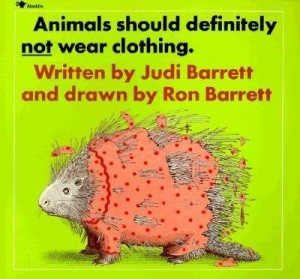
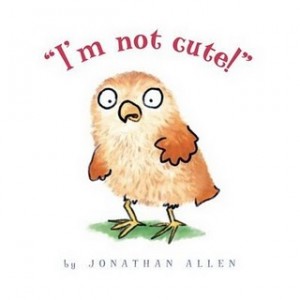
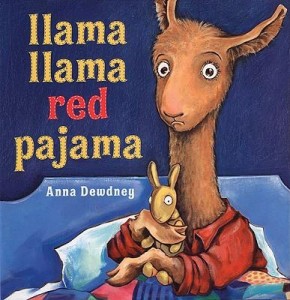
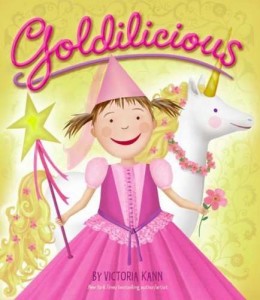

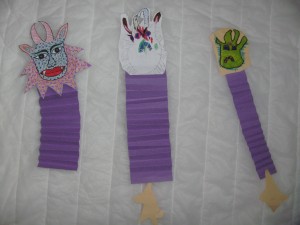


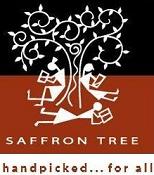
Recent Comments